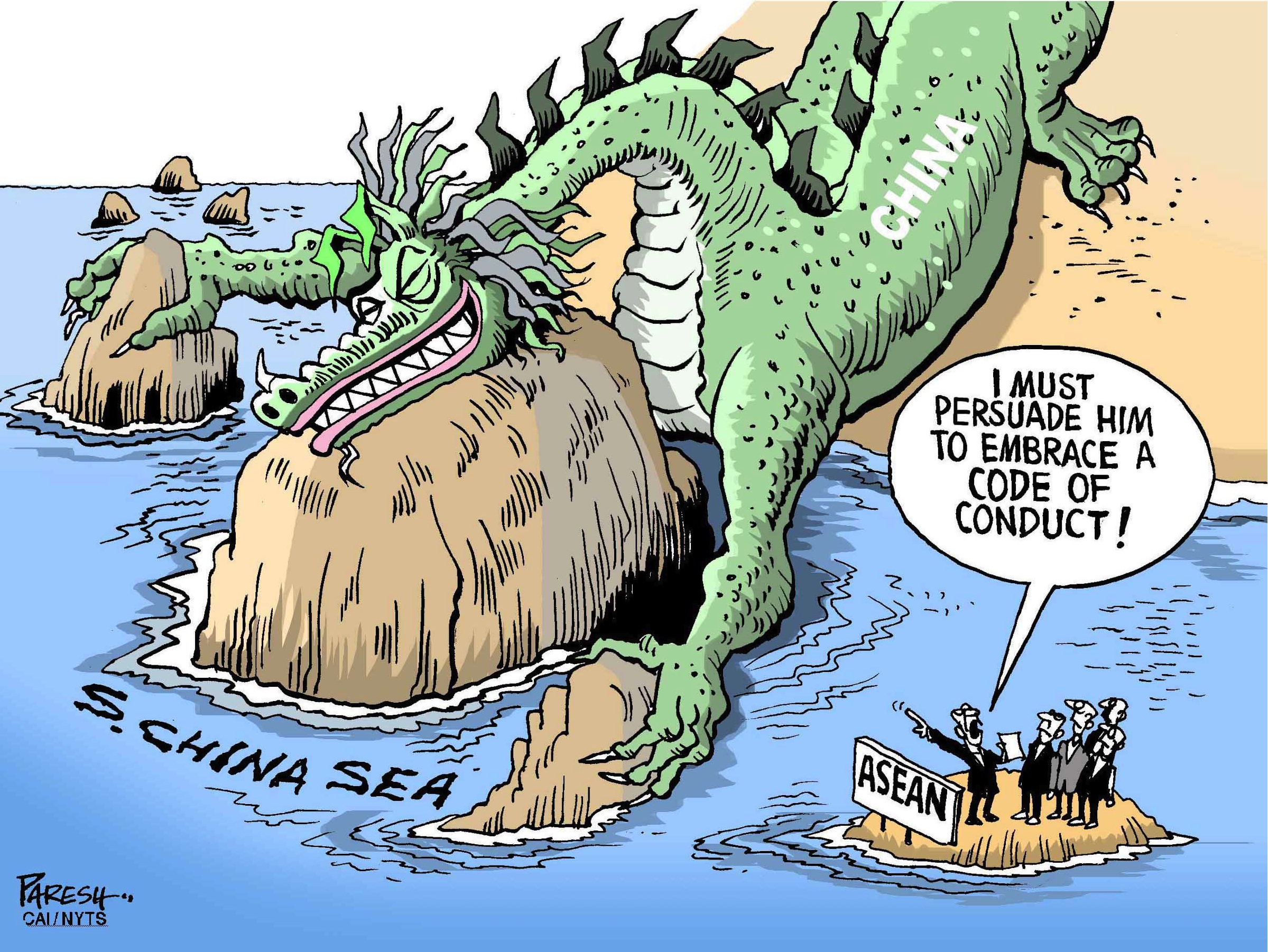The South China Sea has become the most important testing ground for the changing economic, political and military relationship between China and the United States.
The islands, rocks, reefs and shoals at the heart of the dispute — most of them uninhabited and submerged at high tide — cover just a few square kilometers of a sea area that extends over 3 million sq. km. But long-festering disputes over sovereignty among the littoral states (principally China, Vietnam and the Philippines but involving Malaysia, Brunei and Indonesia) have been transformed into a dangerous and unpredictable confrontation between the superpowers (China and the U.S.).
In theory, the dispute is straightforward and consists of three elements: (1) who owns the outcrops; (2) what rights, if any, does ownership confer to natural resources in the surrounding seas and beneath the seabed; and (3) what does ownership mean for ships and aircraft of other nations journeying through the area, which contains some of the world's busiest and most important sea lanes.



